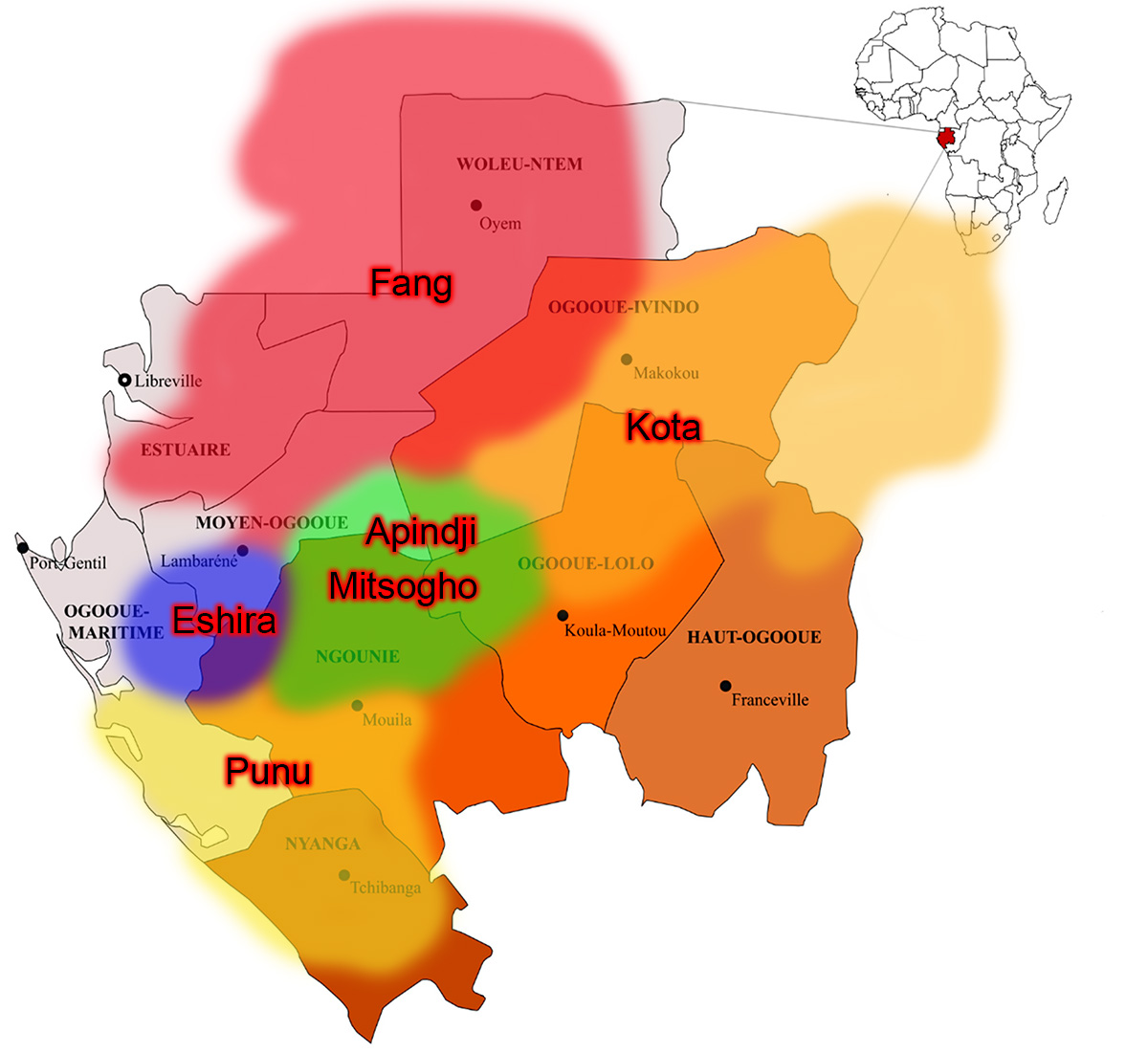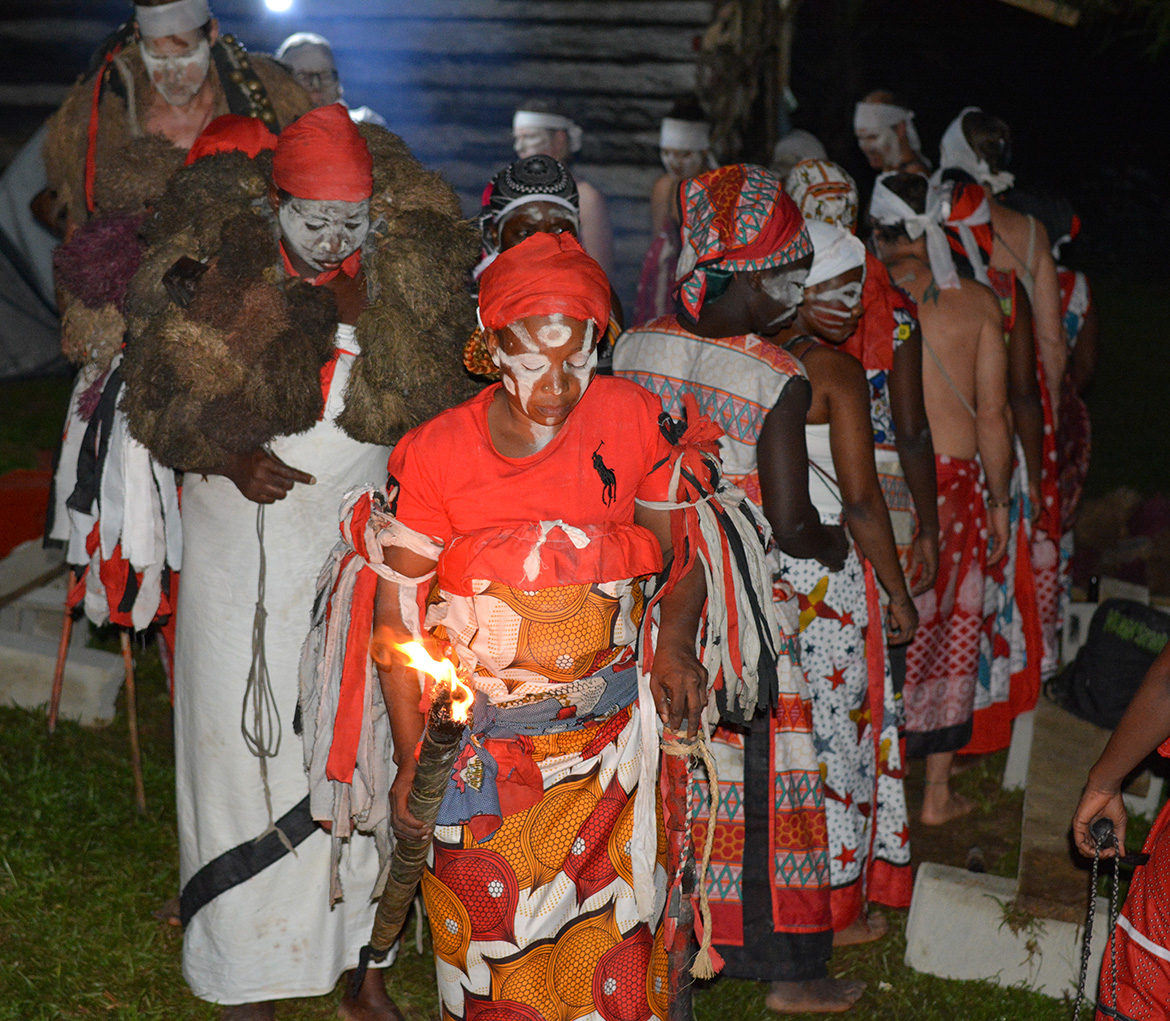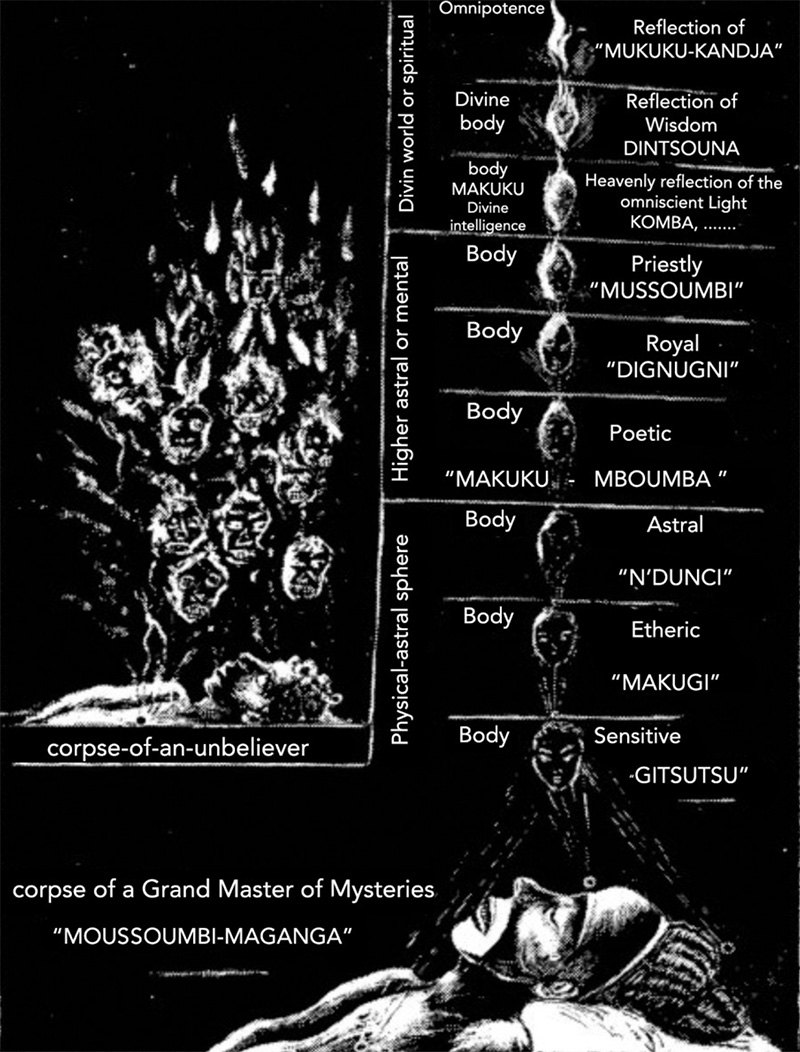Bwiti is a profound spiritual tradition that we hold dear, deeply rooted in the heart of Gabon, a place some refer to as "the Tibet of Africa." It is renowned for its unique approaches to spiritual awakening and growth. This rich cultural heritage of ours, once veiled in secrecy, has gradually captivated the attention of the global spiritual community, thanks to its significant impact on individuals' physical, emotional, mental, and overall spiritual well-being.
Below you can read one of the best books ever written in english bout what Bwiti is all about.
The Bwiti tradition, with origins that are difficult to pinpoint but undeniably ancient, predates the 19th century. This is evidenced by observations made by Paul Belloni Du Chaillu, the first European to explore Gabon's interior, who witnessed its practice at the heart of the country. Originally a guarded spiritual practice of the Babongo pygmy tribes within the dense foliage of Gabon's Lope National Forest, Bwiti has expanded and evolved over centuries, embraced and reshaped by various ethnic groups including the Apindji, Mitsogho, Fang, Eshira, Kota, and Punu. These tribes have woven their unique cultural threads into the fabric of Bwiti, enriching it with diverse interpretations while maintaining its core rituals, particularly the use of iboga (Tabernanthe iboga), a potent plant integral to its rites of passage.
Central to Bwiti is the rite of passage (initiation) involving the consumption of iboga root bark, which contains the alkaloid ibogaine that can induce hallucinogenic visions in higher quantities. These rituals, particularly the dissumba and missoko, serve different purposes; dissumba, performed at puberty by young men, is a days-long journey through spectacular visions leading to ancestral lands, culminating in the neophyte's return with a new name and acceptance into the community. Missoko, on the other hand, is sought for therapeutic reasons, often involving smaller doses of iboga, administered by Nganga healers to address illness, psychological disorders, or other misfortunes. However people from outside of Gabon way past puberty started to have interest in receiving the dissumba initiation as well, and this was made possible, in the form of a late rite of passage
Now recognized as one of Gabon's three main religions, Bwiti's significance transcends its origins, embodying a complex blend of spirituality, tradition, and healing that continues to play a pivotal role in Gabon's cultural and spiritual identity. Despite its prohibition in several countries due to its narcotic classification, the practice persists, deeply rooted in the communal life and ancestral wisdom of its people.

Bwiti's resilience and adaptability are evident in its historical confrontation with external religious pressures. In the face of efforts by Christian missionaries and colonial governments to supplant indigenous beliefs with Christianity, many Bwiti practitioners ingeniously integrated Christian symbols and practices into their ceremonies. This strategic syncretism allowed them to preserve their ancestral traditions while outwardly conforming to imposed religious norms. But let me quote Nengue Me Ndjoung Isidore: "The Catholic church is a beautiful theory for Sunday, the iboga on the contrary is the practice of everyday living. In church, they speak of God, with iboga, you live God"
It wasn’t until 1960 when president Leon M’ba defended the Bwiti religion and stopped the Christian suppression of the Bwiti religion.
This made it possible for our village to not employ any Christian elements and we were allowed to keep it in the original and pure form as it was intended.
The international recognition of Bwiti's spiritual potency has also led to the establishment of Bwiti-based ceremonies beyond Gabon's borders, notably in countries like Costa Rica, Mexico, Portugal and the Netherlands. These adapted ceremonies, while less complete than how we do it here in Gabon, strive to maintain the essence of the Bwiti experience, offering participants a glimpse into this transformative spiritual journey.
Central to the Bwiti tradition is the concept of healing and wisdom. Practitioners and participants alike seek to achieve a harmonious flow with life, embracing joy and contentment. This spiritual path is not only about personal transformation but also about communal healing, allowing a new member to join the family and the passing of sacred knowledge from one generation to the next.
Our village is a Mitsogho Bwiti village.
We belong to the Mitsogho people, nestled in the Massifs de Chaillu mountains within Ngounié province of Gabon. Our tongue is Tsogho, hence our designation as Mi-Tsoghos, where "Mi" means multiple people. Our numbers may be small, yet we command respect and awe for our deep connections with the spirits of the afterworld.
Our lineage possibly represents the original non-Baka Gabonese settlers of this area. The Baka, pygmy tribes from various African nations, migrated into Gabon over centuries. This historical footprint is evidenced by the pervasive influence of Mitsogho words and practices in Bwiti ceremonies. Bwiti, a term of Mitsogho origin, derives its meaning from the mystical "sacred wood" or iboga, with 'ibo' signifying healing and 'ga' denoting wood in our dialect.
Mitsogho songs are a staple in nearly all Gabonese traditional healing rites. So widespread is the familiarity with Mitsogho language across the nation that there was once a proposal to make it the national ethnic language.
Though many Mitsoghos now reside in Libreville and Mouila, our ancestral heartlands extend through the lush tropical mountain forests from west of the Ngounié and Ogoué rivers' meeting point to the confluence of the Ogoulou and Ngounié rivers. Our ancient settlements were chiefly around the vast Ikobé valley, spanning 70 miles.
We are a people of resilience and valor, the last to fall under French colonial dominion around 1940. Our lore is rich with tales of warriors like Mbombet A Gnaghé, who took to the Ikobé valley for guerrilla warfare against French invaders. Mbombet, cloaked in legend for his supposed magical prowess, was eventually undone by betrayal.
To this day, direct descendants of Mbombet hold venerable positions within our traditional Mitsogho tribal structure, often hailed as illustrious magicians and healers.
In essence, our practice of iboga ceremonies originated with the Babongo tribes and evolved into Dissumba Bwiti, eventually intertwining with the Apindji and Mitsogho tribes, where it transformed into Bwiti. The Mitsogho, specifically the Etsogo na Pindzi, introduced the Fang people to Bwiti, who then shared it with the Eshira people. The Fang incorporated Byeri—a practice involving reliquary guardian statues that connect them to their ancestors, allowing their protective and guiding spirits to influence their lives.
Dissumba Bwiti, akin to the roots of a tree, has branched out into various denominations, primarily due to Christian suppression. Of these branches, Missoko Bwiti remains one of the most authentic, staying closest to Dissumba's origins and least influenced by external elements, including Byeri.
The four main branches of Dissumba Bwiti are:
Missoko Ngondet
Specialized in consultation, diagnostics, and healing, with a strong emphasis on the visions experienced during ceremonies.
Missoko MiobetFocused on healing with plants, herbs, and trees, alongside or excluding the iboga root, with less emphasis on consultation and diagnostics.
This branch is known for its depth of knowledge.
Concentrated on protection and healing from parasitic energies, maintaining brief consultations to prioritize energetic healing and protection.
Missoko MoutakombiInitiated by Moutakombi, who initially doubted the authenticity of the other three branches but later recognized his error.
Despite this, the movement he started continued, embodying the Bwiti of knowledge
and creation.
Denominationalization in this context refers to the fragmentation of our singular religious practice into multiple groups or denominations with slightly varied beliefs or practices, each with their unique approach to working with plants and engaging in Bwiti traditions, including distinct prayers.
Here are some of the rites from the four branches of Missoko Bwiti. Text in grey is what we offer:
- Abanji: Traditional Bwiti rite among the Myene people (also known as Dyumba, Galwa, Mpongwe, Omyene people). For both women and men.
- Assumega / Assoumenga: Traditional Bwiti rite among the Fangs.
- Dissumba Muruna Mata: Known as Dissumba of Elevation, practiced by the Vungu people among others, with Dipanda as the spiritual leader.
- Essum / Essume: Traditional Bwiti rite among the Fangs.
- Elombo / Ilombo: Traditional mixed Bwiti rite for both men and women, using fresh iboga. Focused more on visuals and visions during the ceremony.
- Irina (Erina): Mabandji Bwiti rite for both men and women. Medicinal Bwiti.
- Mabandji: Traditional Bwiti rite among the Mitsogo, Eshira (Shira), Puvi, and the Bapunu (Punu) people, among others. For both women and men.
- Mboumba Yano: Water spirit initiation, a mixed rite for both men and women.
- Ndeya na Dissanga (Kanga): Traditional Bwiti rite reserved for men in the Dissoumba branch.
- Ndzembe: Traditional Bwiti rite for men among the Myènè people. Medicinal Bwiti.
- Niembet: Traditional Bwiti rite also written as ndjembe, is for women among the Mitsogo, Puvi, Massango, and Apindji people.
- Ombwiri: Dissumba rite.
- Omboudi / Ombud: Traditional Dissumba Bwiti rite for men among the Nzebis people.
- Ologuo / Elogho:This initiation embodies the most intense and powerful spirit and brings up strong emotions
Note: Hazing, known as the Mueri (Mwiri) initiation, involving potentially harmful practices like circumcision and beating with sticks, is strongly discouraged within our community. Such practices are not reflective of our values and should be avoided.



